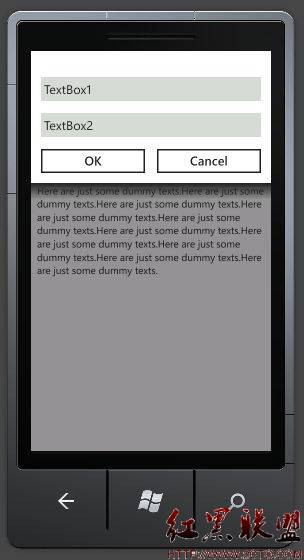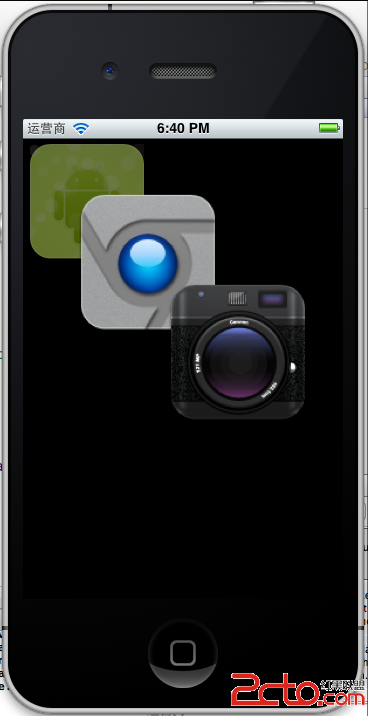ios学习笔记(三)UISlider与UISwitch控件
1 首先我们还是创建一个Single View Application,然后打开MainStoryboard_iphone.storyboard,在IB中添加一个UISlider控件和一个Label,这个Label用来显示Slider的值。
选中新加的Slider控件,打开Attribute Inspector,修改属性值,设置最小值为0,最大值为100,当前值为0.5,并确保勾选上Continuous,如下图:

接着我们放上UISwitch控件,就是很像开关的那种控件,它只有两个状态:on和off,全都放上去效果就是这样的:

2.好了我们开始写代码喽:ViewController.h:
#import <UIKit/UIKit.h>
@inte易做图ce ViewController : UIViewController{
UILabel *sliderlabel;
UISwitch *leftSwitch;
UISwitch *rightSwitch;
}
@property (nonatomic,retain) IBOutlet UILabel *sliderlabel;
@property (nonatomic,retain) IBOutlet UISwitch *leftSwitch;
@property (nonatomic,retain) IBOutlet UISwitch *rightSwitch;
- (IBAction)sliderChanged:(id)sender;
- (IBAction)switchChanged:(id)sender;
@end
#import <UIKit/UIKit.h> @inte易做图ce ViewController : UIViewController{ UILabel *sliderlabel; UISwitch *leftSwitch; UISwitch *rightSwitch; } @property (nonatomic,retain) IBOutlet UILabel *sliderlabel; @property (nonatomic,retain) IBOutlet UISwitch *leftSwitch; @property (nonatomic,retain) IBOutlet UISwitch *rightSwitch; - (IBAction)sliderChanged:(id)sender; - (IBAction)switchChanged:(id)sender; @end
接着是实现ViewController.m:
#import "ViewController.h"
@inte易做图ce ViewController ()
@end
@implementation ViewController
@synthesize sliderlabel;
@synthesize leftSwitch;
@synthesize rightSwitch;
- (void)viewDidLoad
{
[super viewDidLoad];
// Do any additional setup after loading the view, typically from a nib.
}
- (void)viewDidUnload
{
[super viewDidUnload];
// Release any retained subviews of the main view.
}
- (BOOL)shouldAutorotateToInte易做图ceOrientation:(UIInte易做图ceOrientation)inte易做图ceOrientation
{
if ([[UIDevice currentDevice] userInte易做图ceIdiom] == UIUserInte易做图ceIdiomPhone) {
return (inte易做图ceOrientation != UIInte易做图ceOrientationPortraitUpsideDown);
} else {
return YES;
}
}
- (IBAction)sliderChanged:(id)sender{
UISlider *slider=(UISlider*)sender;
int progressAsInt=(int)(slider.value+0.5f);
NSString *newText=[[NSString alloc] initWithFormat:@"%d",progressAsInt];
sliderlabel.text=newText;
[newText release];
NSLog(@"%d",progressAsInt);
}
- (IBAction)switchChanged:(id)sender{
UISwitch *whichSwich=(UISwitch *)sender;
BOOL setting=whichSwich.isOn;
[leftSwitch setOn:setting animated:YES];
[rightSwitch setOn:setting animated:YES];
}
- (void)dealloc{
[sliderlabel release];
[leftSwitch release];
[rightSwitch release];
[super dealloc];
}
@end
#import "ViewController.h" @inte易做图ce ViewController () @end @implementation ViewController @synthesize sliderlabel; @synthesize leftSwitch; @synthesize rightSwitch; - (void)viewDidLoad { [super viewDidLoad]; // Do any additional setup after loading the view, typically from a nib. } - (void)viewDidUnload { [super viewDidUnload]; // Release any retained subviews of the main view. } - (BOOL)shouldAutorotateToInte易做图ceOrientation:(UIInte易做图ceOrientation)inte易做图ceOrientation { if ([[UIDevice currentDevice] userInte易做图ceIdiom] == UIUserInte易做图ceIdiomPhone) { return (inte易做图ceOrientation != UIInte易做图ceOrientationPortraitUpsideDown); } else { return YES; } } - (IBAction)sliderChanged:(id)sender{ UISlider *slider=(UISlider*)sender; int progressAsInt=(int)(slider.value+0.5f); NSString *newText=[[NSString alloc] initWithFormat:@"%d",progressAsInt]; sliderlabel.text=newText; [newText release]; NSLog(@"%d",progressAsInt); } - (IBAction)switchChanged:(id)sender{ UISwitch *whichSwich=(UISwitch *)sender; BOOL setting=whichSwich.isOn; [leftSwitch setOn:setting animated:YES]; [rightSwitch setOn:setting animated:YES]; } - (void)dealloc{ [sliderlabel release]; [leftSwitch release]; [rightSwitch release]; [super dealloc]; } @end
3.剩下的就是连接操作和输出口:
将slider控件的value changed事件与sliderChanged方法连接在一起,将swich控件的value changed事件与swichChanged方法连接在一起,当然还要把lable控件和swich控件的输出与ViewController的相应控件接口连接在一起。
最终实现的效果如下面两张图:


摘自 亨利摩根的专栏
补充:移动开发 , 其他 ,




